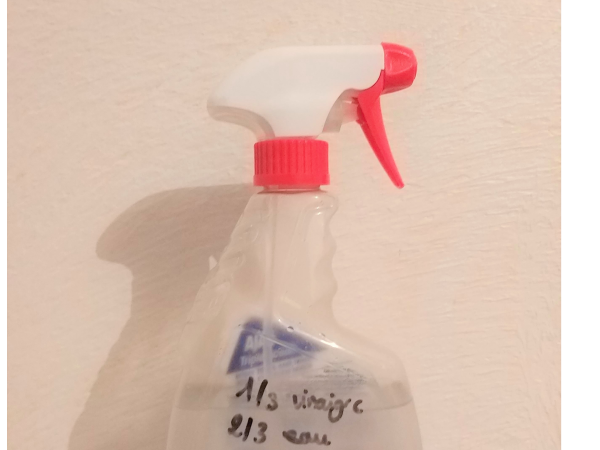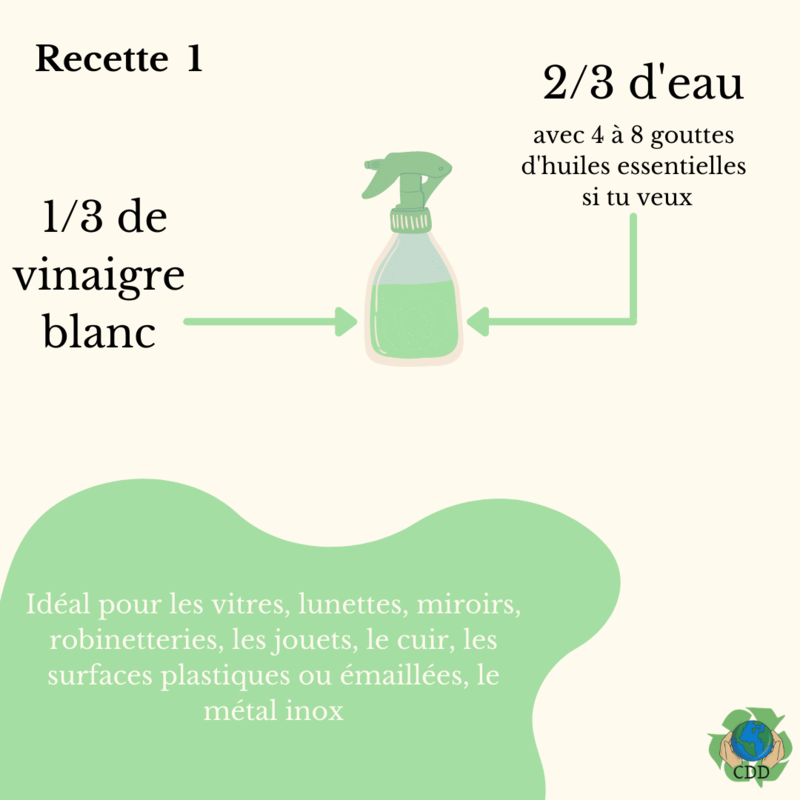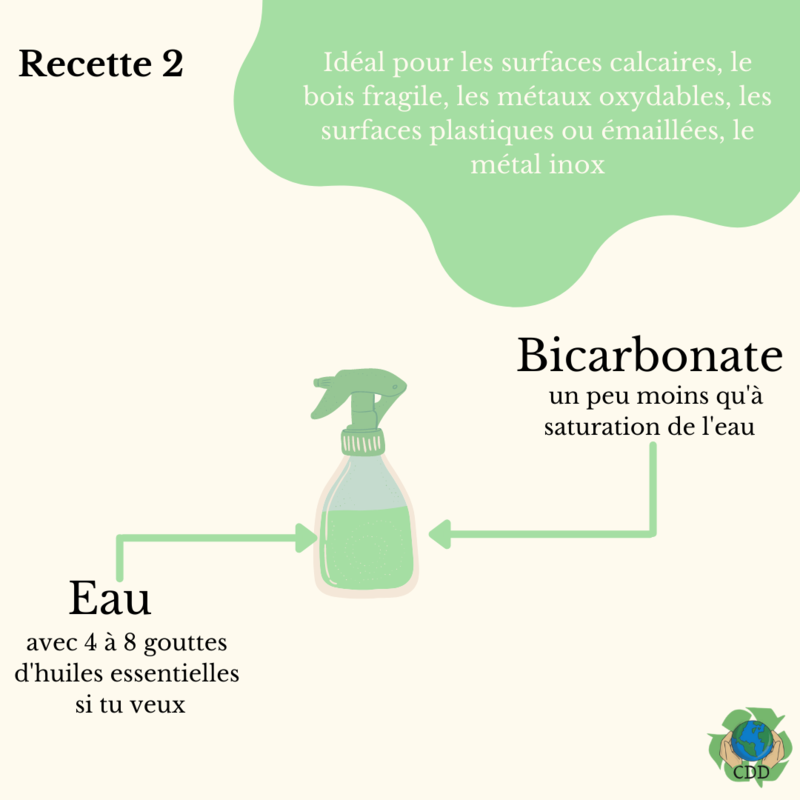(Page créée avec « {{Warning|Be careful to use the correct type of bicarbonate for each use: for cosmetic use, use only food/cosmetic bicarbonate and for food use, use ONLY food grade bicarb... ») |
(Page créée avec « Vinegar multi-purpose cleaner ») |
||
| Ligne 47 : | Ligne 47 : | ||
}} | }} | ||
{{Tuto Step | {{Tuto Step | ||
| − | |Step_Title= | + | |Step_Title=Vinegar multi-purpose cleaner |
|Step_Content=Mélanger 1/3 de vinaigre blanc pour 2/3 de volume d'eau. | |Step_Content=Mélanger 1/3 de vinaigre blanc pour 2/3 de volume d'eau. | ||
Version du 10 juillet 2024 à 17:08
Introduction
Both products can be used to clean any greasy surface, although it's best to choose one over the other depending on the surface.
- Vinegar cleaner: for windows, glasses, mirrors, taps, baby/children's toys and leather.
- Bicarbonate cleaner: for hard surfaces, fragile wood, oxidisable metals, etc.
- One or the other: for plastic, enamel and stainless steel surfaces.
Matériaux
- White vinegar
- Sodium bicarbonate
- Water
Outils
empty sprinkler bottles or conventional bottles
Étape 1 - Details of ingredients
- White vinegar: White vinegar, otherwise known as spirit vinegar, crystal. It is a 100% natural and biodegradable product with a pH between 3.5 and 5 (acid) with approximately 12% alcohol, obtained by macerating an aqueous solution of at least 6% acetic acid (often from beet ethanol). It evaporates naturally without posing any risk (apart from a slight and temporary irritation of the throat and eyes if you are in a small space). Cost : ~ 0.40€/L, prefer to buy in the food vinegar section (avoid the household section as it is often more expensive and flavoured). Properties: More info and G culture here
- Degreaser,
- Deodorising,
- Conservative (thanks to the acidic pH),
- Antiseptic, disinfectant, antiparasitic, antibacterial, antifungal (thanks to the acid pH)
- Descaler / anti-scale (the acid reacts with the scale to make it disappear in an acid-base reaction causing heat and CO2 bubbles),
- Corrosive for limestone surfaces (and damages wood in high doses).
- Sodium bicarbonate: also known as sodium bicarbonate, sodium hydrogen carbonate, sodium hydrogen carbonate, sodium hydrogen carbonate, monosodium carbonate, sodium bicarbonate, soda, baking soda or natrum bicarbonatum. A fine white powder similar to table salt or talc with a pH of 8-8.5 (base). Made from limestone and salt, bicarbonate is naturally present in the body and is harmless to health. Does not give off any fumes, does not evaporate. Properties: cleans, scours and deodorises. It dissolves grease and proteins responsible for stains. It prevents the proliferation of bacteria and softens hard water. More info and G culture here Cost : ~3-4 euros/kg
Here we'll be using household bicarbonate (cheaper than baking soda, but if you only have baking soda for food or cosmetics on hand it works very well).
.
Étape 2 - Vinegar multi-purpose cleaner
Mélanger 1/3 de vinaigre blanc pour 2/3 de volume d'eau.
Optionnel : pour parfumer vous pouvez remplacer une partie de l'eau par des hydrolats OU ajouter 4-8 gouttes d'huiles essentielles pour 1L
Étape 3 - Nettoyant multiusage bicarbontate
Mélanger du bicarbonate et de l'eau froide jusqu'à saturer l'eau, puis rajoutez un peu d'eau. Il est important de rajouter de l'eau sinon le liquide saturé recristalisera dans l'embout et finira par le boucher.
Optionnel : pour parfumer vous pouvez remplacer une partie de l'eau par des hydrolats OU ajouter 4-8 gouttes d'huiles essentielles pour 1L.
Notes et références
Par expérience j'ai une légère préférence pour le nettoyant à base de vinaigre car il semble dissoudre les graisses plus rapidement. Son efficacité est incroyable et n'a absolument rien a envier aux produits industriels, tout en étant quasiment gratuite.
Contrairement à ce qui est courant de trouver sur internet et même dans certaines livres de recettes, il est inutile de mélanger du vinaigre et du bicarbonate dans un même produit si ce n'est pas pour l'utiliser au moment de la réaction comme un désincrustant. Une fois la réaction produisant du gaz passée, le pouvoir nettoyant du liquide est équivalent à de l'eau!
Merci à l'équipe étudiante de la CDD - Comission Développement Durable ISTOM pour les illustrations
Published



 Français
Français English
English Deutsch
Deutsch Español
Español Italiano
Italiano Português
Português